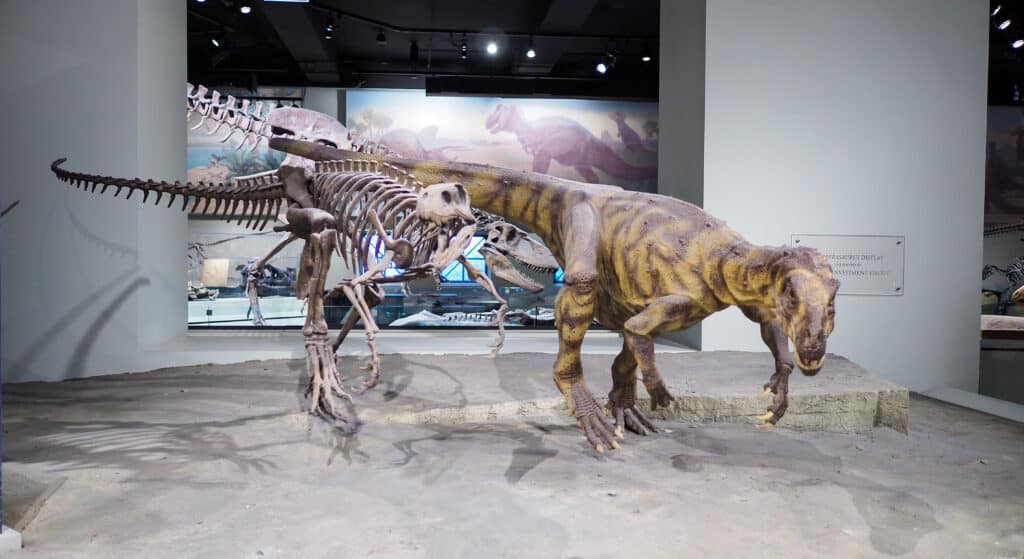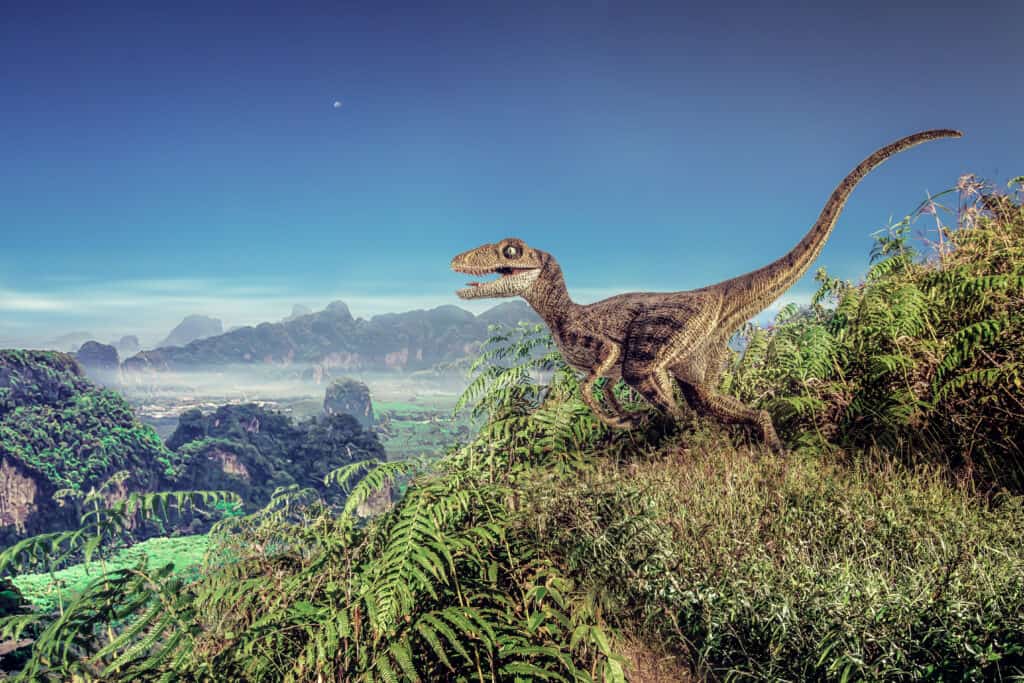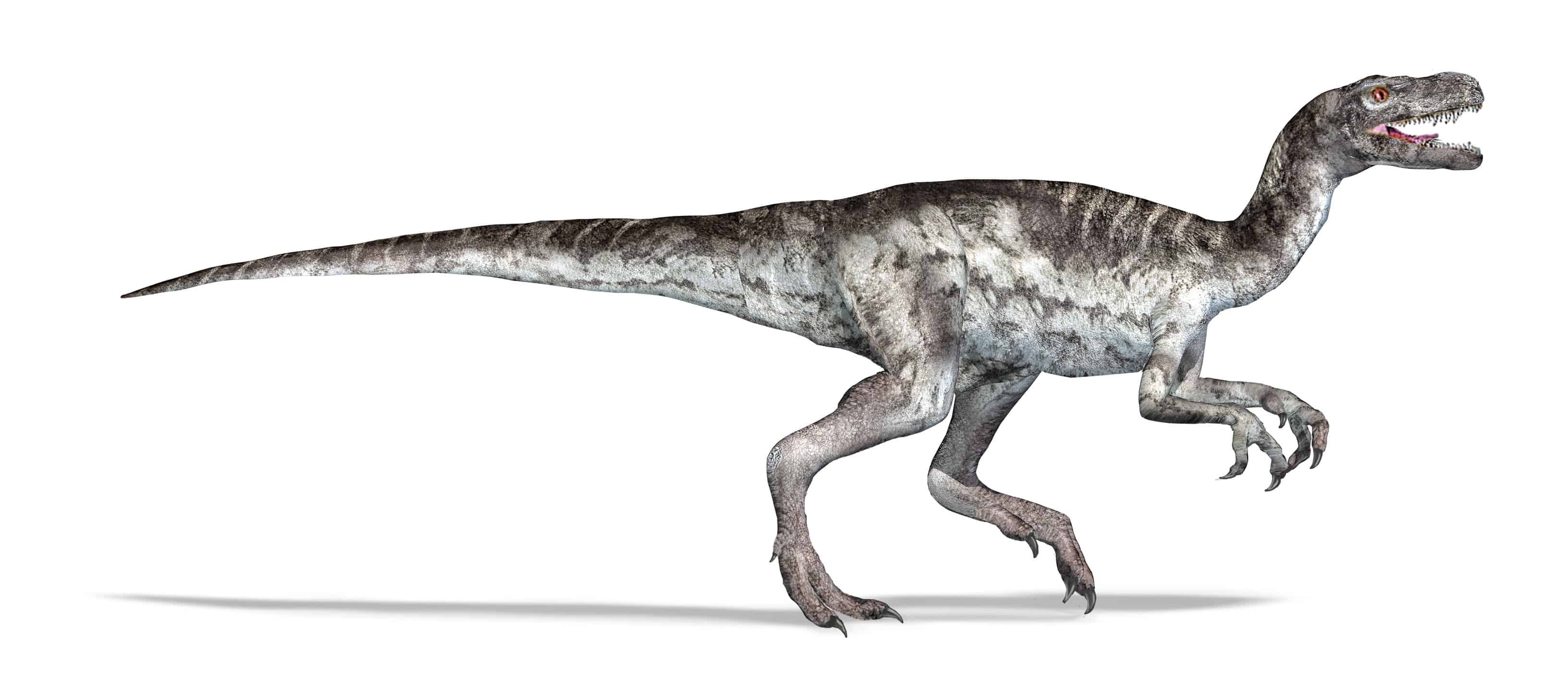The age of dinosaurs was an interesting period – an age of colossal and powerful creatures walking the earth. Among the train of strange creatures that roamed the planet were the Herrerasaurus and the Velociraptor.
The Herrerasaurus was a member of the family Herrerasauridae. Its genera were among the earliest of the dinosaurian biodiversity. It existed during the Carnian stage of the Triassic period. This was about 231- 229 million years ago. It was called an archosaur because of its bird and reptile-like similarities.
And the Velociraptor was a theropod dinosaur that lived approximately 75- 71 million years ago. It existed during the latter part of the Cretaceous period. It was one of the most recent dinosaurs that existed before the mass extinction.
What were the differences between Herrerasaurus, which seemed like a predecessor, and the Velociraptor, which appeared to be a successful breed that existed after?
In this article, we’ll take a historical analysis to compare and contrast the major differences that make the older Herrerasaurus distinct from the Velociraptor.
What Were The Major Differences Between Herrerasaurus vs. Velociraptor
Before we dive into the differences between the Herrerasaurus and the Velociraptor, let’s briefly take a look at what these individual creatures looked like.
The Herrerasaurus was a lightly built, bipedal carnivore. It had a long tail and a relatively small head. Its skulls were up to 56cm long in adults. It had strong lower limbs with stout thighs. Its foot had five toes, but the weight of the organism rested on only the middle three toes.
As typical of a dinosaur, the upper limbs are short compared to their hindlimbs. However, this was effective for its feeding style.
The Velociraptor, on the other hand, was one of the few dinosaurs that fossil records show had feathers over its body and arms. It was also bipedal. Its skull grew up to 25cm in length. Its jaws were relatively small and were lined with 26- 28 wide-spaced teeth on each side.
The Velociraptor had large feathered forelimbs. It had three strong claws. The claws were arranged in a similar construction to modern birds.
Now, let’s compare the lizard-like Herrerasaurus and bird-like Velociraptor under different lenses.

The Herrerasaurus was a lightly built, bipedal carnivore with a long tail.
©photoshooter2015/Shutterstock.com
Herrerasaurus vs. Velociraptor: Origins
The Herrerasaurus is older than the Velociraptor. The former was one of the earliest dinosaurs. It existed during the early Carnian age. This was the late Triassic period, about 228 million years ago. Its first fossils were recovered in the Ischigualasto Formation of Northwestern Argentina.
Herrerasaurus Ischigualastensis was the name of the first known species. It was named after Victoria Herrera, who made its discovery and its fossil location.
The Velociraptor, however, existed about 75- 71 million years ago. This was during the Late Cretaceous Period. Peter Kaisen discovered the first Velociraptor fossils on 11th August 1923 in Mongolia. The second species, Velociraptor osmolskae, was found in Inner Mongolia, China. Henry Hairfield Osborn named the species Velociraptor mongoliensis after its country of origin.

The first Herrerasaurus were discovered in the Ischigualasto Formation of Northwestern Argentina.
©Pao W/Shutterstock.com
Herrerasaurus vs. Velociraptor: Size
The Herrerasaurus was larger than the Velociraptor in all areas. The Herrerasaurus was up to 4-7ft tall and about 7-15ft in total length, head-to-tail. The smaller specimens of the Herrerasaurus were about half this length. The Herrerasaurus was a heavy organism with a weight of 113-226kg (250-500)lbs.
Alternatively, the Velociraptors were generally very small. It had a rough size of a very large turkey. It was approximately 1.5ft tall, 6ft long, and weighed about 15kg (33lbs).
This weight difference showed that the Herrerasaurus was about 3-4 times bigger than the Velociraptor. However, the size of each organism contributed to its survival in its environment.
The Velociraptor, despite its small size, was known to achieve high speeds. This enabled it to run from predators or potential threats. The Herrerasaurus, on the other hand, used its size for hunting its prey and defending itself as well.
Herrerasaurus vs. Velociraptor: Speed and Movement
Comparing the speeds of these organisms, as expected, the Velociraptor has the highest speed. Velociraptor is popularly known for its rapid movement. Its name Velociraptor was coined from the Latin words “Velox,” which meant “swift,” and “raptor,” which meant “robber.” This was given as a description of its agility and feeding traits.
The Velociraptor could achieve a moving speed of 40 kilometers per hour and a running speed up to 64 kilometers per hour. Even the notably fastest dinosaur, Struthiomimus, had a running speed of 50-80 kilometres per hour. Its small size must have contributed to its agility.
However, the Herrerasaurus wasn’t typically a slow dinosaur. It could achieve a maximum speed of about 40 kilometers per hour. Its flat back and its strong limbs were its advantages in the speed game. The Herrerasaurus stood on its toes, and its leg muscles gave it a powerful gait.

Lightweight, small, and nimble, the Velociraptor could run up to 64 kilometers per hour.
©kamomeen/Shutterstock.com
Herrerasaurus vs. Velociraptor: Defenses
Let’s compare how the Herrerasaurus and the Velociraptor defended themselves against attacks and their predators.
The Herrerasaurus was well-equipped for its defenses. As big as the Herrerasaurus is, it was often preyed on by other more giant dinosaurs. So it had reasons to be able to protect itself.
Its strong hindlimbs granted it the ability to outrun impending danger. Its forelimbs, on the other hand, were generally smaller compared to its hindlimbs like a typical dinosaur’s. The arms ended in a long five-digit hand. The first three digits ended in powerful claws. These claws were used to grasp its prey and to hurt its challenger like other Herrerasaurus and dinosaurs when challenged.
An additional defense mechanism was the Herrerasaurus’ teeth and jaws. Its teeth were similar to most theropods. Its teeth had knife-like serrations that pointed up and towards the back. The Herrerasaurus lower jaw had a unique hinge that was about halfway along its length. The feature made the Herrerasarus’ bite more deadly.
The Velociraptor, on the other hand, isn’t at a disadvantage because of its size. In fact, the Velociraptor’s size and behavior contributed a lot to its defense. The Velociraptor often used its speed as defense since it was a solitary creature.
The Velociraptors were portrayed to move and hunt in packs in the popular movie Jurassic Park. But in reality, the Velociraptors were rather solitary animals.
Also, the Velociraptor’s agility was a tool for attack and defense. With its speed, it could outrun most of its predators. And when challenged, it could swiftly deliver deadly blows with its claws
The animal had long, hyperextensible bird-like claws. The claws of the Velociraptor were its greatest strength. The Velociraptor could easily impale its attackers. Its lightweight body contributed to its swift attack and defense speeds.
Herrerasaurus vs. Velociraptor: Predatory Behaviours
Both the Herrerasaurus and the Velociraptor were carnivores. However, both of them weren’t apex predators in their food chains.
The Velociraptor had a very interesting predatory behavior. It was capable of taking down prey larger than it. Its main prey were other smaller reptiles, Amphibians, small dinosaurs, and mammals.
While hunting its prey, the Velociraptor hunted like the modern-day predators like lions and tigers. The Velociraptor hunts by first separating its prey from the herd, i.e., isolating its prey. Then it would stalk its prey and sneak up on it till it gets to a reasonable range and then launches its attack by pouncing on its prey.
If that strategy failed, the Velociraptor could easily outrun its prey, pinning it to the ground with its long toe claws. This pinning technique was referred to in a study as Raptor Prey Restraint (RPR).
The Velociraptor fed on its victim alive. The feathered predator would use its teeth and sickle-shaped claws to tear its prey open. Its predatory behavior resembled that of several species of birds and reptiles.
Conversely, the Herrerasaurus fed on most plant-eating dinosaurs like Hadrosaurs and rhynchosaurs. Its diet also consisted primarily of land Rodents, small prehistoric lizards, aetosaurs, and insects
The Herrerasaurus was faster than most of its prey. It has a strong lower jaw with inward-curving serrated teeth. It used this to hold its prey. The Herrerasaurus tries to deliver a deadly bite on its prey to kill it before feeding. It often targets the neck of its large prey. The Herrerasaurus had a bite force of about 25N. A single bite is enough to cause considerable internal damage to its prey.
Conclusion
The Herrerasaurus and the Velociraptor species were very similar to each other. Scientists believed both species possessed characteristics similar to birds and lizards.
However, Herrerasaurus, being more ancient, was considered to be the link to the evolution of lizard and bird-like dinosaurs. And Velociraptor is considered more ancestral to modern birds like the ostrich.
If the Herrerasaurus and the Velociraptor were to face head-on, it would have been a deadly fight. But the Velociraptor had a better chance of winning the fight. This would be because of its agility and sharp impaling claws. However, in reality, this wasn’t practically possible and never occurred since they lived in different periods.
If you’d like to read more articles on our comparison of ancient wonders that roamed the earth. Check out the articles below:
Thank you for reading! Have some feedback for us? Contact the AZ Animals editorial team.








